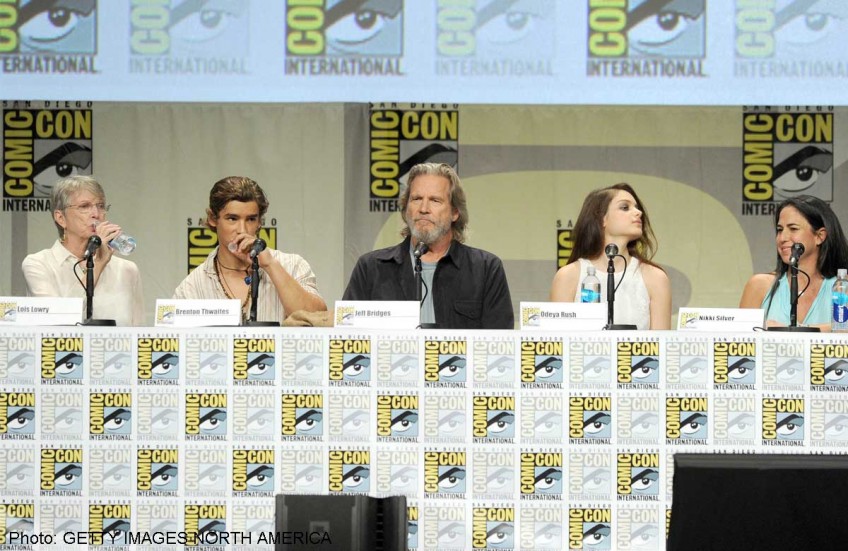Oh please, The Giver is not Hunger Games

Lois Lowry's 1993 novel The Giver pre-dates young-adult bestsellers such as The Hunger Games and Divergent print-to-screen series. But now that it is also getting the movie treatment, and with a backdrop of a dystopian future similar those other stories, comparisons are inevitable.
Lowry, 77, however, is having none of it, sniffing at the suggestion that there might be any parallels between her writing and Suzanne Collins' The Hunger Games, which was first published in 2008, or Veronica Roth's Divergent, which first hit bookshelves in 2011.
Similarities exist "only in that they all postulate some kind of a future", she says at a recent press event for the new film based on her book.
"But they are kind of adventure stories. And there's a lot of violence in them. And I veer away from that," she says of her book, which is set in a world where social strife and pain have been eliminated by encouraging "sameness", doing away with anything that might inflame strong emotions, including music, colour and love.
Exploring themes such as social conformity, totalitarianism and eugenics, The Giver has sold 12 million copies, making her one of the most successful young-adult authors on the planet.
She has been especially influential in the United States, where the book has been a set text in many middle schools and received the Newbery Medal for its contributions to children's literature.
But although Lowry is cited as an inspiration by newer young-adult authors such as Roth, she sees big differences between their work and hers.
"I tend to write things that are more about ideas than about action," she says of her story, which is told largely from the perspective of Jonas, the boy anointed to become the community's next Giver - the human receptacle of the collective memories expunged from society.
This is why her book was so late to the Hollywood party, taking 18 years to be turned into a movie, with the introspective plot also having to be amped up for the screen. "Visual action had to be added because there's not a great deal of it in the book," says Lowry, who has given her stamp of approval to the film by Australian director Philip Noyce (The Quiet American, 2002).
"I thought they did a beautiful job," she concludes, despite having initial reservations about other changes, including the incorporation of a romantic sub-plot between Jonas and his childhood friend Fiona.
Lowry adds: "There are a lot of dystopian novels out there now for young people, it has become quite popular. That's ending now - publishers are tired of them. And maybe the film-viewing public will tire of them soon as well, I don't know."
The Giver opened in the US at No. 5, taking only US$12.3 million (S$15.3 million). But she is content with being able to influence so many young readers with her books, which include three other tomes in The Giver quartet - Gathering Blue (2000), Messenger (2004) and Son (2012).
"It gives one a great feeling of responsibility to know you are affecting the lives of young people. At an age when they're still determining who they are and who they will be, it is an enormous responsibility - I take it quite seriously," says Lowry, who engages with readers through her website, where she receives as many as 50 to 60 e-mail messages a day.
"Some of them are school assignments. One of my favourites, in a bad way, said this: 'Please tell me all the similes and metaphors in The Giver. I need this information by Thursday'," she says with a smile.
"But now and then, there will be very passionate individual letters or e-mail that need to be replied to personally. They're so personal, it's really quite wonderful."

This article was first published on August 20, 2014.
Get a copy of The Straits Times or go to straitstimes.com for more stories.